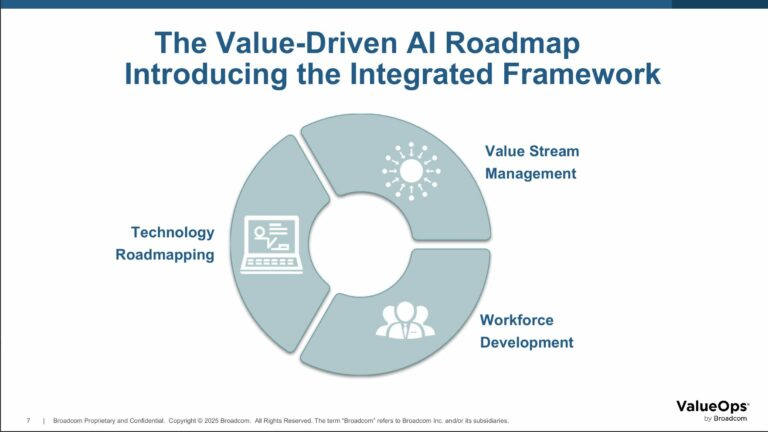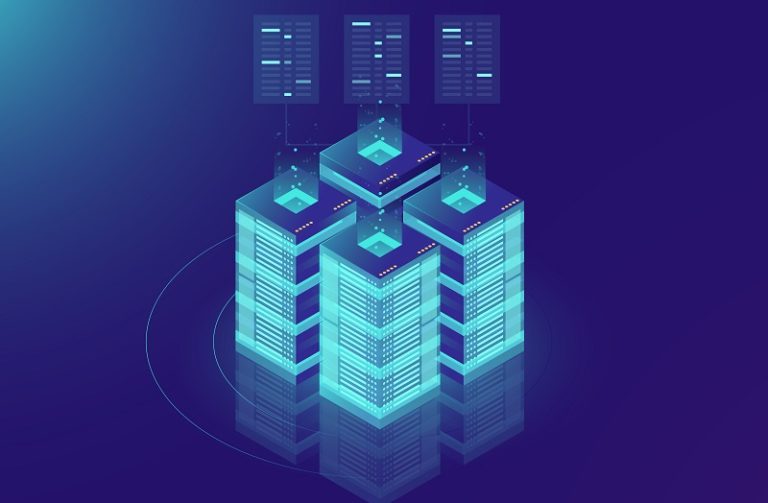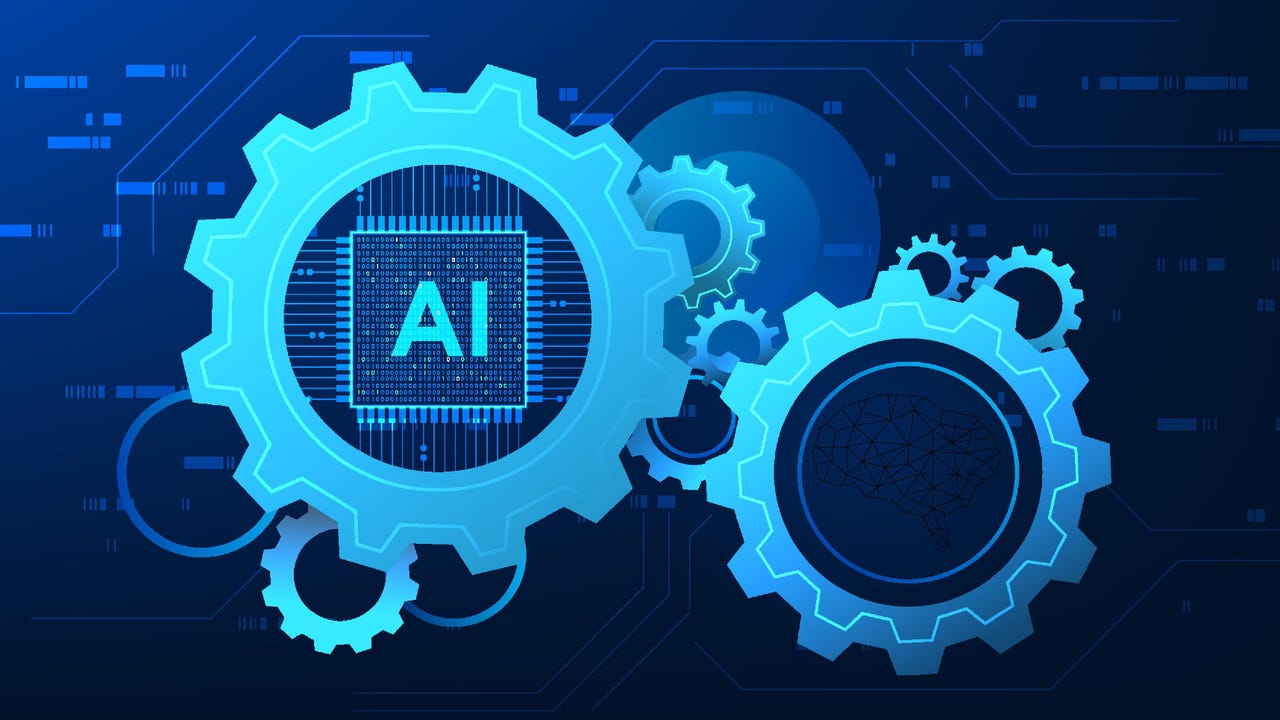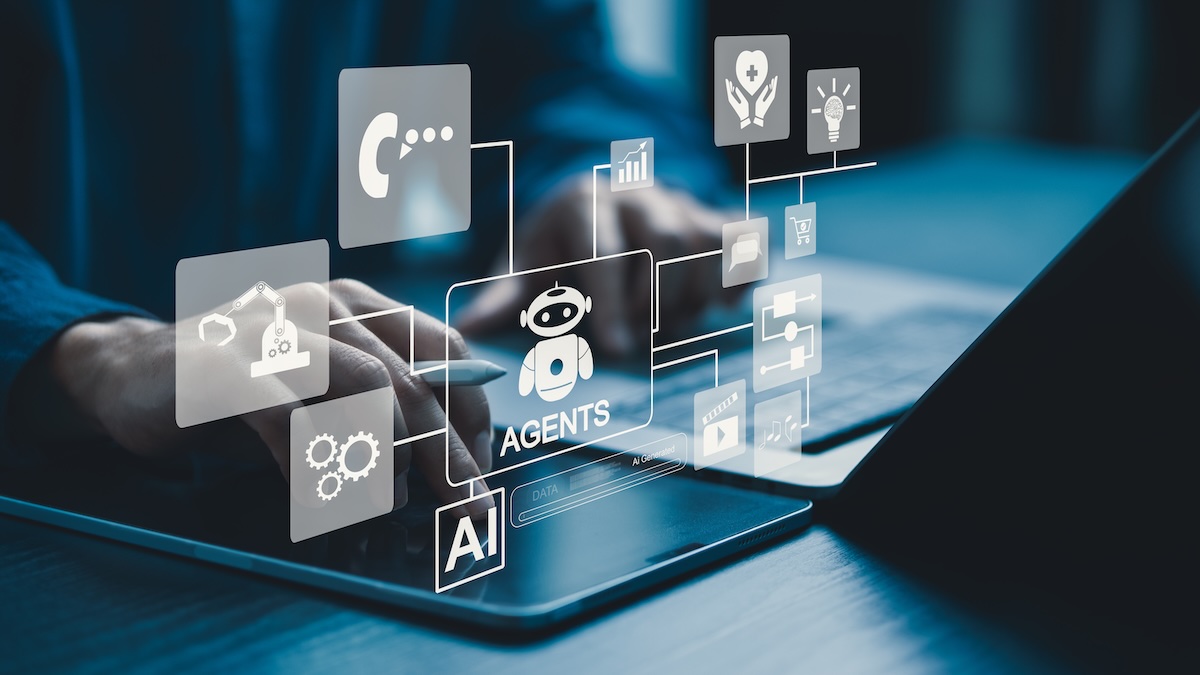Quote for the day:
"You live longer once you realize that any time spent being unhappy is wasted." -- Ruth E. Renkl
Six hard truths for software development bosses
 Everyone behaves differently when the boss is around. Everyone. And you, as a
boss, need to realize this. There are two things to realize here. Firstly,
when you are present, people will change who they are and what they say.
Secondly, you should consider that fact when deciding whether to be in the
room. ... Bosses need to realize that what they say, even comments that you
might think are flippant and not meant to be taken seriously, will be taken
seriously. ... The other side of that coin is that your silence and non-action
can have profound effects. Maybe you space out in a meeting and miss a
question. The team might think you blew them off and left the great idea
hanging. Maybe you forgot to answer an email. Maybe you had bigger fish to fry
and you were a bit short and dismissive of an approach by a direct report.
Small lapses can be easily misconstrued by your team. ... You are the boss.
You have the power to promote, demote, and award raises and bonuses. These
powers are important, and people will see you in that light. Even your best
attempts at being cordial, friendly, and collegial will not overcome the
slight apprehension your authority will engender. Your mood on any given day
will be noticed and tracked. ... You can and should have input into technical
decisions and design decisions, but your team will want to be the ones driving
what direction things take and how things get done.
Everyone behaves differently when the boss is around. Everyone. And you, as a
boss, need to realize this. There are two things to realize here. Firstly,
when you are present, people will change who they are and what they say.
Secondly, you should consider that fact when deciding whether to be in the
room. ... Bosses need to realize that what they say, even comments that you
might think are flippant and not meant to be taken seriously, will be taken
seriously. ... The other side of that coin is that your silence and non-action
can have profound effects. Maybe you space out in a meeting and miss a
question. The team might think you blew them off and left the great idea
hanging. Maybe you forgot to answer an email. Maybe you had bigger fish to fry
and you were a bit short and dismissive of an approach by a direct report.
Small lapses can be easily misconstrued by your team. ... You are the boss.
You have the power to promote, demote, and award raises and bonuses. These
powers are important, and people will see you in that light. Even your best
attempts at being cordial, friendly, and collegial will not overcome the
slight apprehension your authority will engender. Your mood on any given day
will be noticed and tracked. ... You can and should have input into technical
decisions and design decisions, but your team will want to be the ones driving
what direction things take and how things get done.
AI prompt injection gets real — with macros the latest hidden threat
 “Broadly speaking, this threat vector — ‘malicious prompts embedded in macros’
— is yet another prompt injection method,” Roberto Enea, lead data scientist
at cybersecurity services firm Fortra, told CSO. “In this specific case, the
injection is done inside document macros or VBA [Visual Basic for
Applications] scripts and is aimed at AI systems that analyze files.” Enea
added: “Typically, the end goal is to mislead the AI system into classifying
malware as safe.” ... “Attackers could embed hidden instructions in common
business files like emails or Word documents, and when Copilot processed the
file, it executed those instructions automatically,” Quentin Rhoads-Herrera,
VP of cybersecurity services at Stratascale, explained. In response to the
vulnerability, Microsoft recommended patching, restricting Copilot access,
stripping hidden metadata from shared files, and enabling its built-in AI
security controls. ... “We’ve already seen proof-of-concept attacks where
malicious prompts are hidden inside documents, macros, or configuration files
to trick AI systems into exfiltrating data or executing unintended actions,”
Stratascale’s Rhoads-Herrera commented. “Researchers have also demonstrated
how LLMs can be misled through hidden instructions in code comments or
metadata, showing the same principle at work.” Rhoads-Herrera added: “While
some of these remain research-driven, the techniques are quickly moving into
the hands of attackers who are skilled at weaponizing proof-of-concepts.”
“Broadly speaking, this threat vector — ‘malicious prompts embedded in macros’
— is yet another prompt injection method,” Roberto Enea, lead data scientist
at cybersecurity services firm Fortra, told CSO. “In this specific case, the
injection is done inside document macros or VBA [Visual Basic for
Applications] scripts and is aimed at AI systems that analyze files.” Enea
added: “Typically, the end goal is to mislead the AI system into classifying
malware as safe.” ... “Attackers could embed hidden instructions in common
business files like emails or Word documents, and when Copilot processed the
file, it executed those instructions automatically,” Quentin Rhoads-Herrera,
VP of cybersecurity services at Stratascale, explained. In response to the
vulnerability, Microsoft recommended patching, restricting Copilot access,
stripping hidden metadata from shared files, and enabling its built-in AI
security controls. ... “We’ve already seen proof-of-concept attacks where
malicious prompts are hidden inside documents, macros, or configuration files
to trick AI systems into exfiltrating data or executing unintended actions,”
Stratascale’s Rhoads-Herrera commented. “Researchers have also demonstrated
how LLMs can be misled through hidden instructions in code comments or
metadata, showing the same principle at work.” Rhoads-Herrera added: “While
some of these remain research-driven, the techniques are quickly moving into
the hands of attackers who are skilled at weaponizing proof-of-concepts.”Are you really ready for AI? Exposing shadow tools in your organisation
 When an organisation doesn’t regulate an approved framework of AI tools in
place, its employees will commonly turn to using these applications across
everyday actions. By now, everyone is aware of the existence of generative AI
assets, whether they are actively using them or not, but without a proper
ruleset in place, everyday employee actions can quickly become security
nightmares. This can be everything from employees pasting sensitive client
information or proprietary code into public generative AI tools to developers
downloading promising open-source models from unverified repositories. ... The
root cause of turning to shadow AI isn’t malicious intent. Unlike cyber
actors, aiming to disrupt and exploit business infrastructure weaknesses for a
hefty payout, employees aren’t leaking data outside of your organisation
intentionally. AI is simply an accessible, powerful tool that many find
exciting. In the absence of clear policies, training and oversight, and the
increased pressure of faster, greater delivery, people will naturally seek the
most effective support to get the job done. ... Regardless, you cannot protect
against what you can’t see. Tools like Data Loss Prevention (DLP) and Cloud
Access Security Brokers (CASB), which detect unauthorised AI use, must be an
essential part of your security monitoring toolkit. Ensuring these alerts
connect directly to your SIEM and defining clear processes for escalation and
correction are also key for maximum security.
When an organisation doesn’t regulate an approved framework of AI tools in
place, its employees will commonly turn to using these applications across
everyday actions. By now, everyone is aware of the existence of generative AI
assets, whether they are actively using them or not, but without a proper
ruleset in place, everyday employee actions can quickly become security
nightmares. This can be everything from employees pasting sensitive client
information or proprietary code into public generative AI tools to developers
downloading promising open-source models from unverified repositories. ... The
root cause of turning to shadow AI isn’t malicious intent. Unlike cyber
actors, aiming to disrupt and exploit business infrastructure weaknesses for a
hefty payout, employees aren’t leaking data outside of your organisation
intentionally. AI is simply an accessible, powerful tool that many find
exciting. In the absence of clear policies, training and oversight, and the
increased pressure of faster, greater delivery, people will naturally seek the
most effective support to get the job done. ... Regardless, you cannot protect
against what you can’t see. Tools like Data Loss Prevention (DLP) and Cloud
Access Security Brokers (CASB), which detect unauthorised AI use, must be an
essential part of your security monitoring toolkit. Ensuring these alerts
connect directly to your SIEM and defining clear processes for escalation and
correction are also key for maximum security.How to error-proof your team’s emergency communications
Hierarchy paralysis occurs when critical information is withheld by junior staff due to the belief that speaking up may undermine the chain of command. Junior operators may notice an anomaly or suspect a procedure is incorrect, but often neglect to disclose their concerns until after a mistake has happened. They may assume their input will be dismissed or even met with backlash due to their position. In many cases, their default stance is to believe that senior staff are acting on insight that they themselves lack. CRM trains employees to follow a structured verbal escalation path during critical incidents. Similar to emergency operations procedures (EOPs), staff are taught to express their concerns using short, direct phrases. This approach helps newer employees focus on the issue itself rather than navigating the interaction’s social aspects — an area that can lead to cognitive overload or delayed action. In such scenarios, CRM recommends the “2-challenge rule”: team members should attempt to communicate an observed issue twice, and if the issue remains unaddressed, escalate it to upper management. ... Strengthening emergency protocols can help eliminate miscommunication between employees and departments. Owners and operators can adopt strategies from other mission-critical industries to reduce human error and improve team responsiveness. While interpersonal issues between departments and individuals in different roles are inevitable, tighter emergency procedures can ensure consistency and more predictable team behavior.SpamGPT – AI-powered Attack Tool Used By Hackers For Massive Phishing Attack
.webp?w=696&resize=696,0&ssl=1) SpamGPT’s dark-themed user interface provides a comprehensive dashboard for
managing criminal campaigns. It includes modules for setting up SMTP/IMAP
servers, testing email deliverability, and analyzing campaign results features
typically found in Fortune 500 marketing tools but repurposed for cybercrime.
The platform gives attackers real-time, agentless monitoring dashboards that
provide immediate feedback on email delivery and engagement. ... Attackers no
longer need strong writing skills; they can simply prompt the AI to create
scam templates for them. The toolkit’s emphasis on scale is equally
concerning, as it promises guaranteed inbox delivery to popular providers like
Gmail, Outlook, and Microsoft 365 by abusing trusted cloud services such as
Amazon AWS and SendGrid to mask its malicious traffic. ... What once required
significant technical expertise can now be executed by a single operator with
a ready-made toolkit. The rise of such AI-driven platforms signals a new
evolution in cybercrime, where automation and intelligent content generation
make attacks more scalable, convincing, and difficult to detect. To counter
this emerging threat, organizations must harden their email defenses.
Enforcing strong email authentication protocols such as DMARC, SPF, and DKIM
is a critical first step to make domain spoofing more difficult. Furthermore,
enterprises should deploy AI-powered email security solutions capable of
detecting the subtle linguistic patterns and technical signatures of
AI-generated phishing content.
SpamGPT’s dark-themed user interface provides a comprehensive dashboard for
managing criminal campaigns. It includes modules for setting up SMTP/IMAP
servers, testing email deliverability, and analyzing campaign results features
typically found in Fortune 500 marketing tools but repurposed for cybercrime.
The platform gives attackers real-time, agentless monitoring dashboards that
provide immediate feedback on email delivery and engagement. ... Attackers no
longer need strong writing skills; they can simply prompt the AI to create
scam templates for them. The toolkit’s emphasis on scale is equally
concerning, as it promises guaranteed inbox delivery to popular providers like
Gmail, Outlook, and Microsoft 365 by abusing trusted cloud services such as
Amazon AWS and SendGrid to mask its malicious traffic. ... What once required
significant technical expertise can now be executed by a single operator with
a ready-made toolkit. The rise of such AI-driven platforms signals a new
evolution in cybercrime, where automation and intelligent content generation
make attacks more scalable, convincing, and difficult to detect. To counter
this emerging threat, organizations must harden their email defenses.
Enforcing strong email authentication protocols such as DMARC, SPF, and DKIM
is a critical first step to make domain spoofing more difficult. Furthermore,
enterprises should deploy AI-powered email security solutions capable of
detecting the subtle linguistic patterns and technical signatures of
AI-generated phishing content.How attackers weaponize communications networks
The most attractive targets for advanced threat actors are not endpoint devices or individual servers, but the foundational communications networks that connect everything. This includes telecommunications providers, ISPs, and the routing infrastructure that forms the internet’s backbone. These networks are a “target-rich environment” because compromising a single point of entry can grant access to a vast amount of data from a multitude of downstream targets. The primary motivation is overwhelmingly geopolitical. We’re seeing a trend of nation-state actors, such as those behind the Salt Typhoon campaign, moving beyond corporate espionage to a more strategic, long-term intelligence-gathering mission. ... Two recent trends are particularly telling and serve as major warning signs. The first is the sheer scale and persistence of these attacks. ... The second trend is the fusion of technical exploits with AI-powered social engineering. ... A key challenge is the lack of a standardized global approach. Differing regulations around data retention, privacy, and incident reporting can create a patchwork of security requirements that threat actors can easily exploit. For a global espionage campaign, a weak link in one country’s regulatory framework can compromise an entire international communications chain. The goal of international policy should be to establish a baseline of security that includes mandatory incident reporting, a unified approach to patching known vulnerabilities, and a focus on building a collective defense.AI's free web scraping days may be over, thanks to this new licensing protocol
 AI companies are capturing as much content as possible from websites while
also extracting information. Now, several heavyweight publishers and tech
companies -- Reddit, Yahoo, People, O'Reilly Media, Medium, and Ziff Davis
(ZDNET's parent company) -- have developed a response: the Really Simple
Licensing (RSL) standard. You can think of RSL as Really Simple Syndication's
(RSS) younger, tougher brother. While RSS is about syndication, getting your
words, stories, and videos out onto the wider web, RSL says: "If you're an AI
crawler gobbling up my content, you don't just get to eat for free anymore."
The idea behind RSL is brutally simple. Instead of the old robots.txt file --
which only said, "yes, you can crawl me," or "no, you can't," and which AI
companies often ignore -- publishers can now add something new:
machine-readable licensing terms. Want an attribution? You can demand it. Want
payment every time an AI crawler ingests your work, or even every time it
spits out an answer powered by your article? Yep, there's a tag for that too.
... It's a clever fix for a complex problem. As Tim O'Reilly, the O'Reilly
Media CEO and one of the RSL initiative's high-profile backers, said: "RSS was
critical to the internet's evolution…but today, as AI systems absorb and
repurpose that same content without permission or compensation, the rules need
to evolve. RSL is that evolution."
AI companies are capturing as much content as possible from websites while
also extracting information. Now, several heavyweight publishers and tech
companies -- Reddit, Yahoo, People, O'Reilly Media, Medium, and Ziff Davis
(ZDNET's parent company) -- have developed a response: the Really Simple
Licensing (RSL) standard. You can think of RSL as Really Simple Syndication's
(RSS) younger, tougher brother. While RSS is about syndication, getting your
words, stories, and videos out onto the wider web, RSL says: "If you're an AI
crawler gobbling up my content, you don't just get to eat for free anymore."
The idea behind RSL is brutally simple. Instead of the old robots.txt file --
which only said, "yes, you can crawl me," or "no, you can't," and which AI
companies often ignore -- publishers can now add something new:
machine-readable licensing terms. Want an attribution? You can demand it. Want
payment every time an AI crawler ingests your work, or even every time it
spits out an answer powered by your article? Yep, there's a tag for that too.
... It's a clever fix for a complex problem. As Tim O'Reilly, the O'Reilly
Media CEO and one of the RSL initiative's high-profile backers, said: "RSS was
critical to the internet's evolution…but today, as AI systems absorb and
repurpose that same content without permission or compensation, the rules need
to evolve. RSL is that evolution." AI is changing the game for global trade: Nagendra Bandaru, Wipro
AI is revolutionising global supply chain and trade management by enabling
businesses across industries to make real-time, intelligent decisions. This
transformative shift is driven by the deployment of AI agents, which
dynamically respond to changing tariff regimes, logistics constraints, and
demand fluctuations. Moving beyond traditional static models, AI agents are
helping create more adaptive and responsive supply chains. ... The strategic
focus is also evolving. While cost optimisation remains important, AI is now
being leveraged to de-risk operations, anticipate geopolitical disruptions,
and ensure continuity. In essence, agentic AI is reshaping supply chains
into predictive, adaptive ecosystems that align more closely with the
complexities of global trade. ... The next frontier is going to be
threefold: first, the rise of agentic AI at scale marks a shift from
isolated use cases to enterprise-wide deployment of autonomous agents
capable of managing end-to-end trade ecosystems; second, the development of
sovereign and domain-specific language models is enabling lightweight,
highly contextualised solutions that uphold data sovereignty while
delivering robust, enterprise-grade outcomes; and third, the convergence of
AI with emerging technologies—including blockchain for provenance and
quantum computing for optimisation—is poised to redefine global trade
dynamics.
5 challenges every multicloud strategy must address
 Transferring AI data among various cloud services and providers also adds
complexity — but also significant risks. “Tackling software sprawl, especially
as organizations accelerate their adoption of AI, is a top action for CIOs and
CTOs,” says Mindy Lieberman, CIO at database platform provider MongoDB. ... A
multicloud environment can complicate the management of data sovereignty.
Companies need to ensure that data remains in line with the laws and
regulations of the specific geographic regions where it is stored and
processed. ... Deploying even one cloud service can present cybersecurity
risks for an enterprise, so having a strong security program in place is all
the more vital for a multicloud environment. The risks stem from expanded
attack surfaces, inconsistent security practices among service providers,
increased complexity of the IT infrastructure, fragmented visibility, and
other factors. IT needs to be able to manage user access to cloud services and
detect threats across multiple environments — in many cases without even
having a full inventory of cloud services. ... “With greater complexity comes
more potential avenues of failure, but also more opportunities for
customization and optimization,” Wall says. “Each cloud provider offers unique
strengths and weaknesses, which means forward-thinking enterprises must know
how to leverage the right services at the right time.”
Transferring AI data among various cloud services and providers also adds
complexity — but also significant risks. “Tackling software sprawl, especially
as organizations accelerate their adoption of AI, is a top action for CIOs and
CTOs,” says Mindy Lieberman, CIO at database platform provider MongoDB. ... A
multicloud environment can complicate the management of data sovereignty.
Companies need to ensure that data remains in line with the laws and
regulations of the specific geographic regions where it is stored and
processed. ... Deploying even one cloud service can present cybersecurity
risks for an enterprise, so having a strong security program in place is all
the more vital for a multicloud environment. The risks stem from expanded
attack surfaces, inconsistent security practices among service providers,
increased complexity of the IT infrastructure, fragmented visibility, and
other factors. IT needs to be able to manage user access to cloud services and
detect threats across multiple environments — in many cases without even
having a full inventory of cloud services. ... “With greater complexity comes
more potential avenues of failure, but also more opportunities for
customization and optimization,” Wall says. “Each cloud provider offers unique
strengths and weaknesses, which means forward-thinking enterprises must know
how to leverage the right services at the right time.”

















/dq/media/media_files/2025/08/28/will-the-future-be-consolidated-platforms-2025-08-28-12-43-37.jpg)













